Filter by
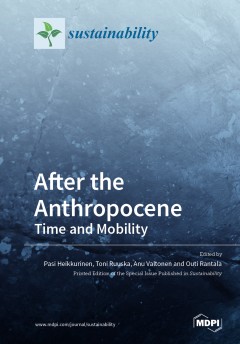
After the Anthropocene: Time and Mobility
- Edition
- -
- ISBN/ISSN
- 9783039369577
- Collation
- -
- Series Title
- -
- Call Number
- -
- Edition
- -
- ISBN/ISSN
- 9783039369577
- Collation
- -
- Series Title
- -
- Call Number
- -

Achievements and Challenges of Integrated River Basin Management
Integrated river basin management is an approach focusing on the development and management of land and water resources in a coordinated manner with the primary aim to ensure society development, which is well balanced from the environmental, economic, and social points of view. It is a complex approach, including all aspects of water resource management (water and aquatic ecosystem protection,…
- Edition
- -
- ISBN/ISSN
- 9781838814564
- Collation
- oer.unej.ac.id
- Series Title
- -
- Call Number
- Limnology (inland waters)

Female Genital Mutilation/Cutting in Children and Adolescents : Illustrated G…
- Edition
- -
- ISBN/ISSN
- 978-3-030-81736-7
- Collation
- -
- Series Title
- -
- Call Number
- -
- Edition
- -
- ISBN/ISSN
- 978-3-030-81736-7
- Collation
- -
- Series Title
- -
- Call Number
- -
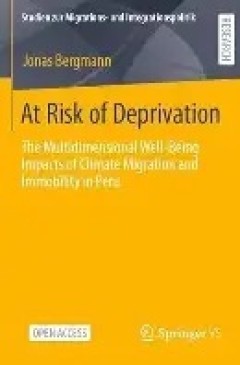
At Risk of Deprivation : The Multidimensional Well-Being Impacts of Climate M…
This open access book examines how and why various forms of climate (im)mobilities can impact people's objective and subjective well-being. Worsening climate impacts are forcing subsistence farmers worldwide to decide between staying or leaving their homes. This mixed methods study analyzes cases of climate-related migration, displacement, relocation, and immobility in Peru's coastal, highland,…
- Edition
- -
- ISBN/ISSN
- 978-3-658-42298-1
- Collation
- -
- Series Title
- Studien zur Migrations- und Integrationspolitik
- Call Number
- 550 BER r
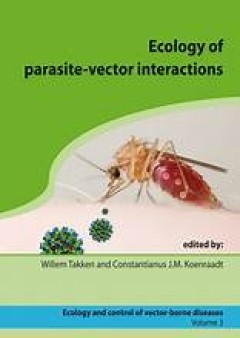
Ecology of parasite-vector interactions
Vector-borne diseases continue to be one of the most important determinants affecting human and animal health. Large numbers of people suffer from diseases like malaria, dengue, filariasis and leishmaniasis, especially in the tropics. Whereas these diseases were eradicated from the temperate climate zones, in recent years the rising incidence of 'emerging' vector-borne diseases such as bluetong…
- Edition
- -
- ISBN/ISSN
- 978-90-8686-744-8
- Collation
- oer.unej.ac.id
- Series Title
- Ecology and Control of Vector-borne Diseases, Volume: 3
- Call Number
- -
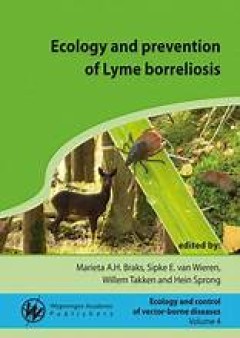
Ecology and prevention of Lyme borreliosis
How can nature be protected and biodiversity be preserved while the threats of zoonotic diseases are minimised? Expanding nature areas and creating ecological networks across Europe is not only beneficial for wildlife, but also for the pathogens they carry. A prominent case is Lyme borreliosis, which has risen from relative obscurity to become a major public health problem in Europe. The Dutch …
- Edition
- -
- ISBN/ISSN
- 978-90-8686-838-4
- Collation
- oer.unej.ac.id
- Series Title
- Ecology and Control of Vector-borne Diseases, Volume: 4
- Call Number
- -

Freshwater Inflows to Texas Bays and Estuaries: A Regional-Scale Review, Synt…
Estuaries are defined by mixing of river and sea water, thus freshwater inflow is a key driver of estuary ecosystem structure and function. While there is much concern about water quality, there is much less about water quantity. As water is diverted for human use, less is flowing to the coast, which threatens estuary ecosystems. Some jurisdictions are now setting inflow standards, but there…
- Edition
- 1
- ISBN/ISSN
- 978-3-031-70882-4
- Collation
- X, 411
- Series Title
- -
- Call Number
- -
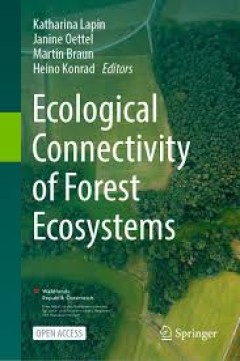
Ecological Connectivity of Forest Ecosystems
This is an open access book. This professional volume provides scientific background and practical guidance on forest management in light of ecological connectivity. Readers will gain a great understanding of shifting species in response to climate change and the resulting loss of various resources. The main drivers of these variations are the quality of the availability, quantity, and quality …
- Edition
- 1
- ISBN/ISSN
- 978-3-031-82206-3
- Collation
- XXV, 663
- Series Title
- -
- Call Number
- -

Aquaponics Food Production Systems = Combined Aquaculture and Hydroponic Prod…
This open access book, written by world experts in aquaponics and related technologies, provides the authoritative and comprehensive overview of the key aquaculture and hydroponic and other integrated systems, socio-economic and environmental aspects. Aquaponic systems, which combine aquaculture and vegetable food production offer alternative technology solutions for a world that is increasingl…
- Edition
- 1
- ISBN/ISSN
- 9783030159436
- Collation
- XVI, 619 hlm ill; lamp
- Series Title
- -
- Call Number
- -

Ecosystem-Based Management, Ecosystem Services and Aquatic Biodiversity = T…
Aquatic ecosystems are rich in biodiversity and home to a diverse array of species and habitats, providing a wide variety of benefits to human beings. Many of these valuable ecosystems are at risk of being irreversibly damaged by human activities and pressures, including pollution, contamination, invasive species, overfishing and climate change. Such pressures threaten the sustainability of the…
- Edition
- 1
- ISBN/ISSN
- 9783030458430
- Collation
- VIII, 580 hlm; ill., lamp.,
- Series Title
- -
- Call Number
- -
 Computer Science, Information & General Works
Computer Science, Information & General Works  Philosophy & Psychology
Philosophy & Psychology  Religion
Religion  Social Sciences
Social Sciences  Language
Language  Pure Science
Pure Science  Applied Sciences
Applied Sciences  Art & Recreation
Art & Recreation  Literature
Literature  History & Geography
History & Geography